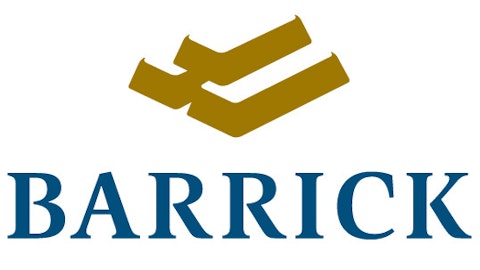 We’ve managed to avoid the great Mayan prediction of the end of the world in 2012, along with countless doomsday prognostications before it. But while we shrug off the continued calls that some people still predict about the end of the world, it’s undeniable there are good reasons investors should have a “doomsday portfolio” to protect them from catastrophic losses.
We’ve managed to avoid the great Mayan prediction of the end of the world in 2012, along with countless doomsday prognostications before it. But while we shrug off the continued calls that some people still predict about the end of the world, it’s undeniable there are good reasons investors should have a “doomsday portfolio” to protect them from catastrophic losses.
I’m not talking about the end of times, though. In the event of runaway asteroids or the second coming, saving for your golden years will be the least of your worries.But I’m also not talking about simply a global malaise in economic growth or the gradual loss of purchasing power in the U.S. dollar, either.
The point is, large-scale disasters, man-made or natural, seem to be getting stronger and more frequent.
- Own hard assets that can be used to store value in the event currencies cease to carry popular support
- Own shares of stable, defensive companies with production and sales across multiple regions or countries to diversify geopolitical risk
- Own assets that provide enough current income to provide a reasonable return on your money in the event the sun comes out tomorrow.
| 1. Gold |
 The ultimate storage of value when the government is no longer able to back its fiat money and investors get nervous about the future… is gold. Gold is probably the biggest insurance-type bet in the portfolio. Like insurance, it may suffer losses or not add much unless the market comes down hard or if inflation jumps. You probably don’t want a large portion of your portfolio in gold, but if things get bad, you definitely want some exposure. Consider any losses on gold as you would an insurance policy: You wouldn’t cancel your homeowner’s policy because you haven’t had a fire in a few years. The ultimate storage of value when the government is no longer able to back its fiat money and investors get nervous about the future… is gold. Gold is probably the biggest insurance-type bet in the portfolio. Like insurance, it may suffer losses or not add much unless the market comes down hard or if inflation jumps. You probably don’t want a large portion of your portfolio in gold, but if things get bad, you definitely want some exposure. Consider any losses on gold as you would an insurance policy: You wouldn’t cancel your homeowner’s policy because you haven’t had a fire in a few years.Gold can pay off on two doomsday scenarios: a jump in inflation or a spike in market fear. An investment in physical gold through the SPDR Gold Trust (ETF) (NYSEARCA:GLD) has easily beaten most other assets during the past decade, but the fund pays no dividend. While I think the shares could edge higher and would surge in a crisis, I also want something that is going to pay me to wait. That’s why I also like Barrick Gold Corporation (USA) (NYSE:ABX). It’s the world’s largest gold miner, with 26 mines in operation across five continents. This diversity in production insulates the company from unrest in any one part of the world. The stock pays a dividend yield of almost 1.1% and is not expensive at just over 8 times forward earnings.[Related: “Revealed: An Inside Look at Ron Paul’s Portfolio“] |
| 2. Oil exploration and production |
.jpg) Even with alternative forms of energy coming into their own, the world still runs on oil. The United States still relies on petroleum for 40% of its energy needs, and that percentage is much higher in many other countries. If confidence were to be lost in global governments and currencies, then oil would be needed as a store of value and for use in production. Even with alternative forms of energy coming into their own, the world still runs on oil. The United States still relies on petroleum for 40% of its energy needs, and that percentage is much higher in many other countries. If confidence were to be lost in global governments and currencies, then oil would be needed as a store of value and for use in production.Chevron Corporation (NYSE:CVX), the nation’s second largest oil company, is the first to come to mind. The company has assets and sales all over the world and a strong 3.3% dividend yield. I wouldn’t put all my eggs in one basket though, so I also like the exchange-traded fund (ETF) Energy Select Sector SPDR (ETF) (NYSEARCA:XLE) for its 1.7% yield and diversification across 45 energy companies. The ETF carries an extremely low expense ratio of 0.18% and trades at a relatively cheap 13.6 times forward earnings of the companies held. |
| 3. Water |
 You can live for weeks without food and shelter, but water becomes a necessity within just a few days. The Journal of Environmental Science & Technology estimates that 1 in 3 counties in the United States could face a high or extreme risk of water shortages due to climate change by the middle of the 21st century. You can live for weeks without food and shelter, but water becomes a necessity within just a few days. The Journal of Environmental Science & Technology estimates that 1 in 3 counties in the United States could face a high or extreme risk of water shortages due to climate change by the middle of the 21st century.
Combine this trend of scarcity with an unforeseen catastrophe that wipes out some supply, and you’ve got hysteria on your hands. Aqua America Inc (NYSE:WTR) could diversify your water exposure through 12 other states in the U.S. and across other water and wastewater service providers. The company pays a sustainable 2.3% yield and has been successful in pushing through large rate increases to pay for infrastructure projects and increase annual revenue. |
| 4. Tobacco |
.jpg) If you think tobacco is not a necessity, just ask anyone who has tried to quit smoking. In the event of an environmental or economic catastrophe, people may cut back on most other products, but they will always buy their cigarettes. If you think tobacco is not a necessity, just ask anyone who has tried to quit smoking. In the event of an environmental or economic catastrophe, people may cut back on most other products, but they will always buy their cigarettes.Lorillard Inc. (NYSE:LO) is the third-largest cigarette producer in the U.S. and has been increasing its market share steadily from 11.8% in 2009 to 14.1% in 2011. The stock pays a huge 5.1% dividend yield and trades at just 13.1 times trailing earnings, well under the industry average of 18.6. Philip Morris International Inc. (NYSE:PM) diversifies exposure to the industry with its strong international presence and brands like Marlboro and Virginia Slims. The shares are relatively expensive at 16.7 times trailing earnings, but management has plans to expand into the Chinese market, which could significantly increase earnings. [Related: “The Most Hated Company on Earth is Bringing Investors Big Profits“] |
.png)
P.S. — Is your portfolio prepared for the worst? Let our research team guide you next year’s big profitable opportunities. Our previous predictions have returned up to 310% gains in a year. To hear our latest, including how Apple’s next breakthrough could kill the traditional bank, click here.
– Joseph Hogue
Warren Buffett’s Top 5 Stocks
Buffett’s firm, Berkshire Hathaway, holds dozens of stocks. But these five make up 75% of its portfolio… worth $65 billion. Click here to get Buffett’s top 5 stocks plus his 16 latest buys, FREE.





